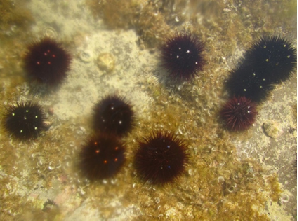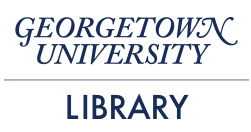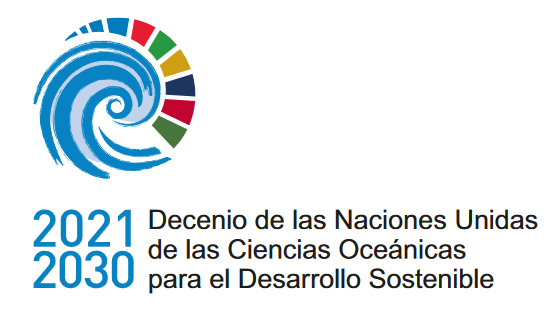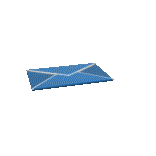Efectos de la luz artificial nocturna sobre la movilidad del erizo de mar Paracentrotus lividus
DOI:
https://doi.org/10.47193/mafis.3712024010106Palabras clave:
Italia, contaminación lumínica, movilidad, eriz, marcadoResumen
La contaminación lumínica plantea una importante amenaza global para la biodiversidad, impulsada por la creciente urbanización costera y el consiguiente crecimiento de la luz artificial nocturna (ALAN). Sin embargo, hasta la fecha, la comunidad científica se ha centrado principalmente en estudiar sus efectos ecológicos dentro del medio terrestre. Solo recientemente se ha prestado atención a los sistemas marinos costeros, que son cruciales debido a su contribución esencial a nivel de ecosistema. Estos ambientes, caracterizados por su alta productividad, también juegan un papel crucial en la protección de las costas contra la erosión. El objetivo de este estudio de caso fue investigar los posibles efectos de ALAN en el erizo de mar Paracentrotus lividus en cuatro áreas de una costa rocosa italiana, seleccionadas según un gradiente de intensidad de luz (0, 0,4, 3 y 25 lux), desde abril 2022 a febrero 2023. Se examinaron los efectos de ALAN midiendo la densidad y el tamaño de los erizos de mar y también su reactividad a una condición de estrés mediante una técnica innovadora de volcar los erizos de mar para estudiar su respuesta fisiológica en presencia o ausencia de luz artificial. Además, se evaluó la permanencia de los erizos de mar en las cuatro áreas mediante una prueba eficiente de marcaje. Los resultados muestran cómo estos organismos, típicamente nocturnos, sufren efectos negativos de la ALAN en términos de menor densidad y movilidad, expresada como velocidad de respuesta ante un evento adverso, en comparación con un área oscura.
Descargas
Referencias
Barbier EB, Hacker SD, Kennedy C, Koch EW, Stier AC, Silliman BR. 2011. The value of estuarine and coastal ecosystem services. Ecol Monogr. 81 (2): 169-193. DOI: https://doi.org/10.1890/10-1510.1
Benedetti-Cecchi L, Bulleri F, Cinelli F. 1998. Density dependent foraging of sea urchins in shallow subtidal reefs on the west coast of Italy (western Mediterranean). Mar Ecol Prog Ser. 163: 203-211. DOI: http://doi.org/10.3354/meps163203
Bird BL, Branch LC, Miller DL. 2004. Effects of coastal lighting on foraging behavior of beach mice. Conserv Biol. 18: 1435-1439. DOI: https://doi.org/10.1111/j.1523-1739.2004.00349.x
Boarda J, Arthur R, Alonso D, Pagès JF, Pessarrodona A, Oliva S, Ceccherelli G, Piazzi L, Romero J, Alcoverro T. 2017. Immanent conditions determine imminent collapses: nutrient regimes define the resilience of macroalgal communities. Proc R Soc B. 284: 20162814. DOI: https://doi.org/10.1098/rspb.2016.2814
Boarda J, Sanmarti N, Selden RL, Lucas A, Pérez M, Alcoverro T, Romero J. 2015. Evaluating potential artifacts of tethering techniques to estimate predation on sea urchins. J Exp Mar Biol Ecol. 471: 17-22. DOI: https://doi.org/10.1016/j.jembe.2015.05.011
Bose APH, Zayonc D, Avrantinis N, Ficzycz N, Fischer-Rush J, Francis FT, Gray S, Manning F, Robb H, Schmidt C, Spice C, Umedaly A, Warden J, Côté IM. 2019. Effects on handling and short-term captivity: a multi-behaviour approach using red sea urchins, Mesocentrotus franciscanus. PeerJ. 7: e6556. DOI: https://doi.org/10.7717/peerj.6556
Bulleri F, Benedetti-Cecchi L, Cinelli F. 1999. Grazing by the sea urchins Arbacia lixula L. and Paracentrotus lividus Lam. in the northwest Mediterranean. J Exp Mar Biol Ecol. 241: 81-95. DOI: https://doi.org/10.1016/S0022-0981(99)00073-8
Ceccherelli G, Pais A, Pinna S, Sechi N, Chessa LA. 2011. Human impact on Paracentrotus lividus: the result of harvest restrictions and accessibility of locations. Mar Biol. 158 (4): 845-852. DOI: http://doi.org/10.1007/s00227-010-1611-5
Cipriano A, Burnell G, Culloty S, Long S. 2014. Evaluation of 3 tagging methods in marking sea urchin, Paracentrotus lividus, populations under both laboratory and field conditions. J Aquacult Res Develop. 5: 276. DOI: http://doi.org/10.4172/2155-9546.1000276
Davies TW, Duffy JP, Bennie J, Gaston KJ. 2014. The nature, extent, and ecological implications of marine light pollution. Front Ecol Environ. 12 (6): 347-355. DOI: https://doi.org/10.1890/130281
Davies TW, Duffy JP, Bennie J, Gaston KJ. 2016. Stemming the tide of light pollution encroaching into marine protected areas. Conserv Lett. 9 (3): 164-171. DOI: https://doi.org/10.1111/conl.12191
Dee LE, Witman JD, Brandt M. 2012. Refugia and top-down control of the pencil urchin Eucidaris galapagensis in the Galápagos Marine Reserve. J Exp Mar Biol Ecol. 416: 135-143. DOI: https://doi.org/10.1016/j.jembe.2012.02.016
Di Bari D, Tiberti C, Mazzei E, Papetti L, Pagli D. 2023. Light pollution and sea turtles nest-site selection. Is it possible a practical management of the problem? Eur J Sustain Dev. 12 (2): 35-46. DOI: https://doi.org/10.14207/ejsd.2023.v12n2p35
Duggan RE, Miller RJ. 2001. External and internal tags for the green sea urchin. J Exp Mar Biol Ecol. 258: 115-122. DOI: https://doi.org/10.1016/s0022-0981(01)00213-1
Ebert TA. 1965. A technique for the individual marking of sea urchins. Ecology. 46: 193-194. DOI: https://doi.org/10.2307/1935273
Farina S, Baroli M, Brundu R, Conforti A, Cucco A, De Falco G, Guala I, Guerzoni S, Massaro G, Quattrocchi G, et al. 2020. The challenge of managing the commercial harvesting of the sea urchin Paracentrotus lividus: advanced approaches are required. PeerJ. 8: e10093. DOI: https://doi.org/10.7717/peerj.10093
Figueiro MG, Sahin L, Roohan C, Kalsher M, Plitnick B, Rea MS. 2019. Effects of red light on sleep inertia. Nat Sci Sleep. 11: 45-57. DOI: https://doi.org/10.2147%2FNSS.S195563
Filbee-Dexter K, Scheibling RE. 2014. Sea urchin barrens as alternative stable states of collapsed kelp ecosystems. Mar Ecol Prog Ser. 495: 1-25. DOI: https://doi.org/10.3354/MEPS10573
Garratt MJ, Jenkins SR, Davies TW. 2019. Mapping the consequences of artificial light at night for intertidal ecosystems. Sci Total Environ. 691: 760-768. DOI: https://doi.org/10.1016/j.scitotenv.2019.07.156
Gaston KJ, Davies TW, Bennie J, Hopkins J. 2012. Reducing the ecological consequences of night-time light pollution: options and developments. J Appl Ecol. 49 (6): 1256-1266. DOI: https://doi.org/10.1111/j.1365-2664.2012.02212.x
Hereu B. 2005. Movement patterns of the sea urchin Paracentrotus lividus in a marine reserve and an unprotected area in the NW Mediterranean. Mar Ecol. 26 (1): 54-62. DOI: https://doi.org/10.1111/j.1439-0485.2005.00038.x
Karakostis K, Zanella-Cléon I, Immel F, Guichard N, Dru P, Lepage T, Plasseraud L, Matranga V, Marin F. 2016. A minimal molecular toolkit for mineral deposition? Biochemistry and proteomics of the test matrix of adult specimens of the sea urchin Paracentrotus lividus. J Proteomics. 136: 133-144. DOI: https://doi.org/10.1016/j.jprot.2016.01.001
Luijendijk A, Hagenaars G, Raasinghe R, Baart F, Donchyts G, Aarninkhof S. 2018. The state of the world’s beaches. Sci Rep. 8: 6641. DOI: https://doi.org/10.1038/s41598-018-24630-6
Macedo S, Torres T, Santos MM. 2017. Methyl-triclosan and triclosan impact embryonic development of Danio rerio and Paracentrotus lividus. Ecotoxicology. 328: 46-53. DOI: https://doi.org/10.1007/s10646-017-1778-3
Millott N. 1976. The photosensitivity of echinoids. Adv Mar Biol. 13: 1-52. DOI: https://doi.org/10.1016/S0065-2881(08)60279-5
[MRAAF] Ministero delle Risorse Agricole, Alimentari e Forestali. 1995. Decreto ministeriale 12 gennaio 1995 in materia di Disciplina della pesca del riccio di mare. GURI 25 gennaio 1995. Nº 20. https://www.gazzettaufficiale.it/eli/id/1995/01/25/095A0345/sg.
Pearse JS. 2006. Ecological role of purple sea urchins. Science. 314: 940-941. DOI: https://doi.org/10.1126/science.1131888
Pinsino A, Alijagic A. 2019 Sea urchin Paracentrotus lividus immune cells in culture: formulation of the appropriate harvesting and culture media and maintenance conditions. Biol Open. 8 (3): bio039289. DOI: http://doi.org/10.1242/bio.039289
Romancino DP, Anello L, Lavanco A, Buffa V, Di Bernardo M, Bongiovanni A. 2017. A sea urchin in vivo model to evaluate Epithelial-Mesenchymal Transition. Dev Growth Differ. 59 (3): 141-151. DOI: https://doi.org/10.1111/dgd.12353
Sala E, Zabala M. 1996. Fish predation and the structure of the sea urchin Paracentrotus lividus populations in the NW Mediterranean. Mar Ecol Prog Ser. 140: 71-81. DOI: http://doi.org/10.3354/meps140071
Satthong S, Saego K, Kitrungoloadjanaporn P, Nuttavut N, Amornsamankul S, Triampo W. 2019. Modeling the effects of light sources on the growth of algae. Adv Differ Equ. 170. DOI: https://doi.org/10.1186/s13662-019-2112-6
Shpigel M, McBride SC, Marciano S, Lupatsch I. 2004. The effect of photoperiod and temperature on the reproduction of European sea urchin Paracentrotus lividus. Aquaculture. 232: 343-355. DOI: https://doi.org/10.1016/S0044-8486(03)00539-8
Stewart NL, Konar B. 2012. Kelp forest versus urchin barrens: alternate stable states and their effect on sea otter prey quality in the Aleutian Island. J Mar Sci. 2012: 492308. DOI: https://doi.org/10.1155/2012/492308
Ullrich-Lüter J, Dupont S, Arboleda E, Hausen H, Arnone M. 2011. Unique system of photoreceptors in sea urchin tube feet. Proc Nal Acad Sci. 108 (20): 8367-8372. DOI: https://doi.org/10.1073/pnas.1018495108
Wangesteen OS, Turon X, Casso M, Palacín C. 2013. The reproductive cycle of the sea urchin Arbacia lixula in northwest Mediterranean: potential influence of temperature and photoperiod. Mar Biol. 160: 3157-3168. DOI: http://doi.org/10.1007/s00227-013-2303-8

Descargas
Publicado
Número
Sección
Licencia
Derechos de autor 2023 Davide Di Bari

Esta obra está bajo una licencia internacional Creative Commons Atribución-NoComercial-CompartirIgual 4.0.
Los autores de los artículos publicados en Marine and Fishery Sciences conservan los derechos de autor de sus artículos, a excepción de las imágenes de terceros y otros materiales añadidos por Marine and Fishery Sciences, que están sujetos a los derechos de autor de sus respectivos propietarios. Por lo tanto, los autores son libres de difundir y volver a publicar sus artículos, sujeto a los requisitos de los propietarios de derechos de autor de terceros y sujeto a que la publicación original sea completamente citada. Los visitantes también pueden descargar y reenviar artículos sujetos a los requisitos de citas. La capacidad de copiar, descargar, reenviar o distribuir cualquier material siempre está sujeta a los avisos de derechos de autor que se muestran. Los avisos de copyright deben mostrarse de manera prominente y no pueden borrarse, eliminarse u ocultarse, total o parcialmente. El autoalmacenamiento en servidores y repositorios de preimpresión está permitido para todas las versiones.
Esta revista ofrece a los autores una política de acceso abierto. Los usuarios pueden leer, descargar, copiar, distribuir, imprimir, buscar o vincular los textos completos de los artículos, o usarlos para cualquier otro propósito legal dentro de la licencia Creative Commons 4.0 (BY-NC-SA), sin solicitar permiso previo del editor o del autor. Esto está de acuerdo con la definición BOAI de acceso abierto.






















